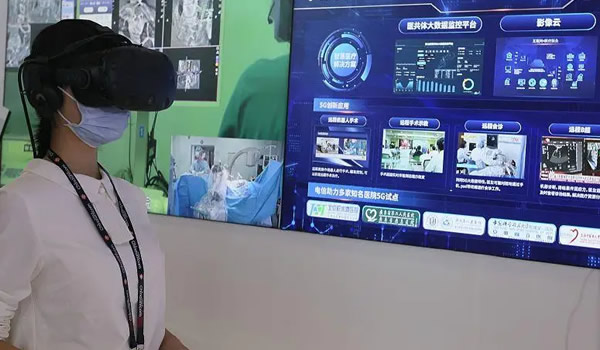Liver cancer is one of the most common and deadly cancers in Asia, with high prevalence linked to hepatitis infections, alcohol use, and lifestyle factors. Despite advances in treatment, late diagnosis remains a challenge. This guide explores the causes, risk factors, symptoms, diagnosis, treatment, and prevention of liver cancer, tailored to the Asian population.

Liver Cancer Overview
Liver cancer develops when abnormal cells grow uncontrollably in the liver. The two main types are:
- Hepatocellular Carcinoma (HCC): The most common form, originating in liver cells.
- Intrahepatic Cholangiocarcinoma: Begins in the bile ducts within the liver.
Liver Cancer in Asia: The Alarming Burden
- High Prevalence: More than half of global liver cancer cases occur in Asia.
- Hepatitis Link: Chronic hepatitis B and C infections are major causes, particularly in China and Southeast Asia.
- High Mortality: Liver cancer is among the top three causes of cancer death in Asia.
- Late Diagnosis: Many patients are diagnosed at advanced stages, limiting treatment options.
Causes and Risk Factors
1. Viral Infections
- Hepatitis B Virus (HBV): Common in East and Southeast Asia. Long-term infection greatly increases cancer risk.
- Hepatitis C Virus (HCV): More common in Japan and parts of South Asia.
2. Alcohol and Lifestyle
- Excessive alcohol damages liver tissue, leading to cirrhosis and cancer.
- Obesity and diabetes contribute to non-alcoholic fatty liver disease (NAFLD), another risk factor.
3. Aflatoxin Exposure
- A toxin produced by fungi in improperly stored grains and nuts. Still an issue in some rural Asian regions.
4. Other Risks
- Smoking.
- Family history of liver disease.
- Long-term use of anabolic steroids or unsafe herbal medicines.
Symptoms of Liver Cancer
Liver cancer may remain silent in early stages. When symptoms appear, they include:
- Unexplained weight loss.
- Persistent fatigue.
- Pain or swelling in the upper right abdomen.
- Loss of appetite and nausea.
- Yellowing of the skin and eyes (jaundice).
- Swelling in the legs.
⚠️ These symptoms often indicate advanced disease, underscoring the need for regular screening.

Diagnosis of Liver Cancer
Doctors may use:
- Blood Tests: Alpha-fetoprotein (AFP) test to detect tumor markers.
- Ultrasound: Initial imaging tool for suspicious liver changes.
- CT Scan or MRI: Provides detailed imaging of liver tumors.
- Biopsy: Confirms cancer diagnosis.
High-risk patients (e.g., hepatitis B carriers) are advised to undergo routine screening every 6–12 months.
Treatment of Liver Cancer
1. Surgery
- Hepatectomy: Removal of the affected part of the liver, possible if the remaining liver is healthy.
- Liver Transplantation: Best option for patients with cirrhosis or extensive tumors, though donor shortages remain a challenge in Asia.
2. Localized Therapies
- Radiofrequency Ablation (RFA): Uses heat to destroy tumors.
- Transarterial Chemoembolization (TACE): Delivers chemotherapy directly into the liver tumor.
- Radiation Therapy: Used selectively in some cases.
3. Systemic Treatments
- Targeted Therapy: Drugs like sorafenib or lenvatinib block tumor growth.
- Immunotherapy: Checkpoint inhibitors (e.g., PD-1 inhibitors) are emerging options.
Prevention of Liver Cancer in Asia
1. Hepatitis Control
- Vaccination: Universal hepatitis B vaccination programs are crucial.
- Antiviral Therapy: Reduces the risk of cancer in HBV/HCV patients.
- Safe Medical Practices: Screen blood donations, ensure sterile needles.
2. Lifestyle Adjustments
- Limit alcohol consumption.
- Maintain healthy weight and manage diabetes.
- Avoid smoking.
- Improve food storage to prevent aflatoxin contamination.
3. Regular Screening
- Ultrasound and AFP testing every 6–12 months for high-risk groups.
- Early detection significantly improves survival rates.
Special Considerations in Asia
- China: High HBV prevalence drives most cases.
- Japan: Historically high HCV prevalence but declining due to treatment advances.
- Southeast Asia: Both HBV and aflatoxin exposure are major contributors.
- India: Rising cases due to obesity and diabetes-related fatty liver disease.
Action Checklist for Liver Health
- Get vaccinated for hepatitis B.
- Get screened regularly if you have HBV, HCV, or cirrhosis.
- Limit alcohol consumption.
- Eat a balanced diet and maintain healthy weight.
- Store grains and nuts properly to avoid aflatoxin.
- Consult a doctor before taking herbal or traditional medicines.
- Seek immediate medical attention for persistent abdominal pain or jaundice.

Conclusion
Liver cancer is one of the deadliest cancers in Asia, but it is also one of the most preventable. Vaccination against hepatitis, lifestyle modifications, and regular screenings can drastically reduce the burden. With better awareness and early intervention, Asia has the opportunity to reduce mortality and improve survival outcomes for liver cancer patients.
liver cancer prevention Asia, hepatitis and liver cancer, liver cancer treatment options